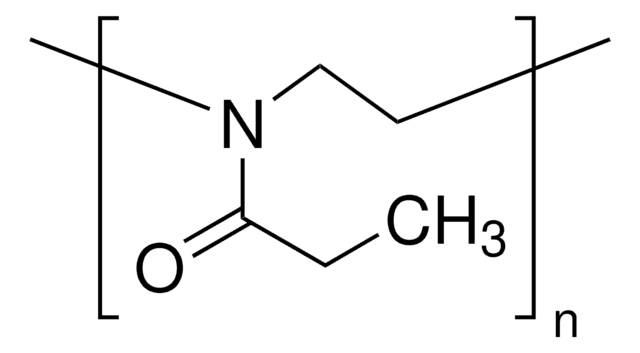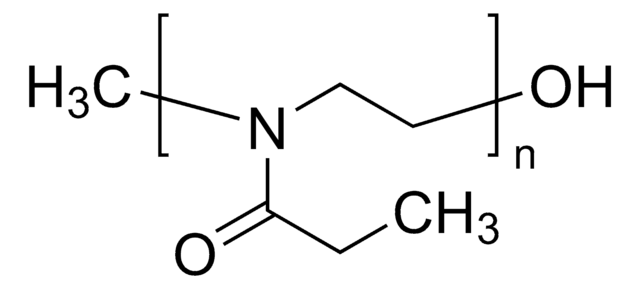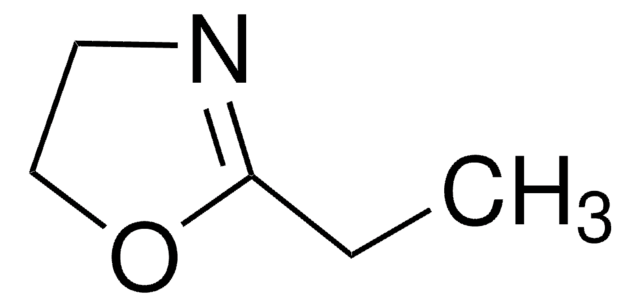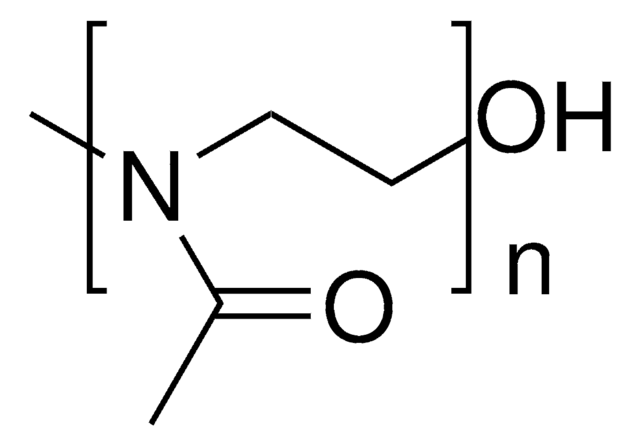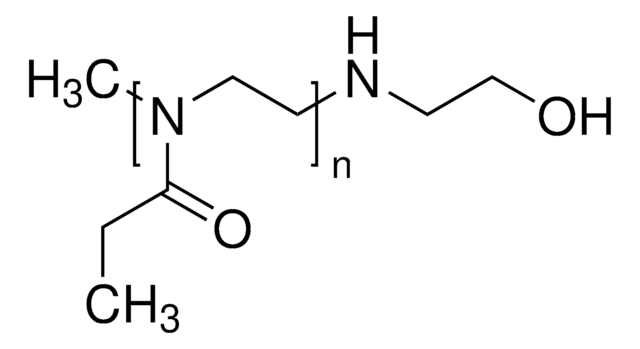741884
Poly(2-ethyl-2-oxazoline)
average Mn 20,000, PDI <1.4
About This Item
Productos recomendados
¿Está buscando productos similares? Visita Guía de comparación de productos
Application
Potential substitute for poly(vinyl alcohol) and poly(vinyl pyrrolidone). Sometimes it is used as an adhesion promoter in coatings. This is also sometimes used in heat sealing and remoistenable hot-melt adhesives. N-propionyl substituted linear polyethylenimine
Features and Benefits
Storage Class
11 - Combustible Solids
wgk_germany
WGK 3
flash_point_f
Not applicable
flash_point_c
Not applicable
Elija entre una de las versiones más recientes:
¿Ya tiene este producto?
Encuentre la documentación para los productos que ha comprado recientemente en la Biblioteca de documentos.
Los clientes también vieron
Artículos
Wide range of functional polymers for biomedical applications have been synthesized and structurally characterized. Several classes of polymers including biodegradable polymers, hydrophilic & amphiphilic polymers, and stimuli responsive polymers have been prepared using controlled and directed functionalization via "living" polymerization such as RAFT, ionic and ring opening polymerization. Selected polymers have been studied for their structure-properties relationship. "
Nuestro equipo de científicos tiene experiencia en todas las áreas de investigación: Ciencias de la vida, Ciencia de los materiales, Síntesis química, Cromatografía, Analítica y muchas otras.
Póngase en contacto con el Servicio técnico